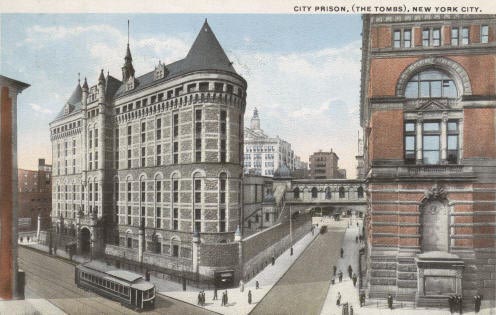The word infrastructure usually conjures up images of roads, highways, bridges and mass transit. One thing that Kate Ascher taught me is that the really interesting stuff is what you don’t see. The idea for her captivating book, The Works, came while observing the aftermath of the World Trade Center attacks. All of a sudden the mechanisms that made New York work were exposed to the surface: steam pipes, sewage systems, telecommunication cables, stormwater management and more. The more she dug, the more interesting it got. Mail used to be sent in underground pneumatic tubes! Do those crosswalk buttons work? Answer: only 25% of the time!
Today’s post is about prisons, something that the average city dweller doesn’t think about. But what is fascinating is that many of New York’s prisons are right in our midst—we walk and drive by them without noticing. Prisons used to be organized along district lines, particularly before the 1898 consolidation of the five boroughs. They were attached to or near the courts and were little more than holding cells. These included the famous Tombs (still in use), the Jefferson Market Prison in the West Village (now the landmarked Jefferson Market Library), the Essex Market Prison in the East Village, the Yorkville Prison at 57th and Lexington, the West Side Prison at 53rd and 8th Avenue, the Fordham Prison and the Harlem Prison.
Today, there are 13 prisons in New York City. Find a prison near you!
Manhattan
1. The Tombs
 Image in public domain via Wikimedia Commons
Image in public domain via Wikimedia Commons
The granite structure of The Tombs shown above was the second to sit on its site built in 1902. The complex was also known as the New York Halls of Justice and House of Detention. The granite was reused from Bridewell Prison next to City Hall. In 1941, the prison was replaced by a 15-story tower across the street, now known as the Manhattan Detention Complex.
A New York-based lawyer describes The Tombs, in its current state, to Untapped Cities “Deep underground, with stale air and bright florescent lights, the cells in the Tombs are dreary, suffocating and sleepless places. During the approximately 24 hours that the accused are held there, they can expect a gross sandwich, shared bathroom with no stall, and 30 cellmates ranging from the dangerous to the innocent in various states of despair.”





